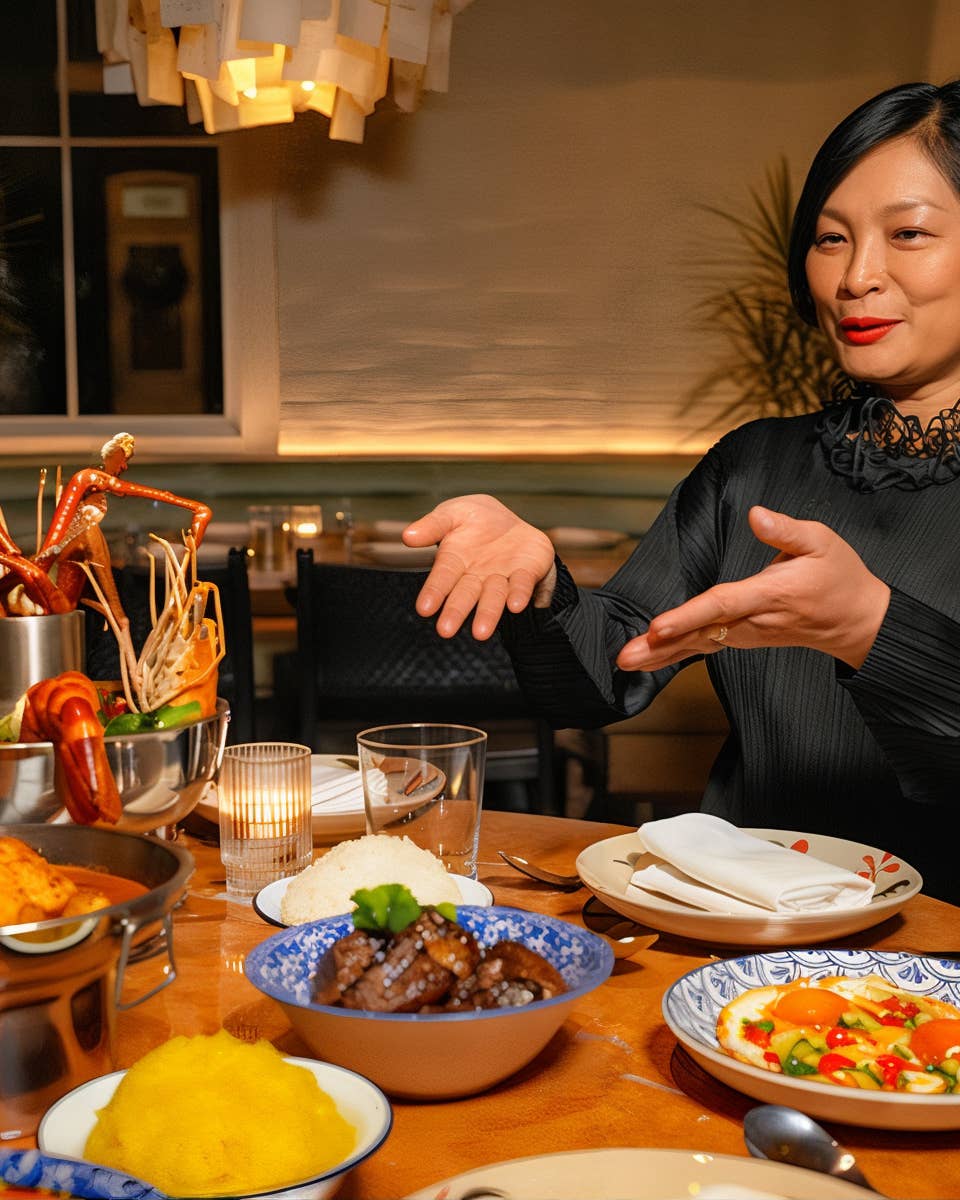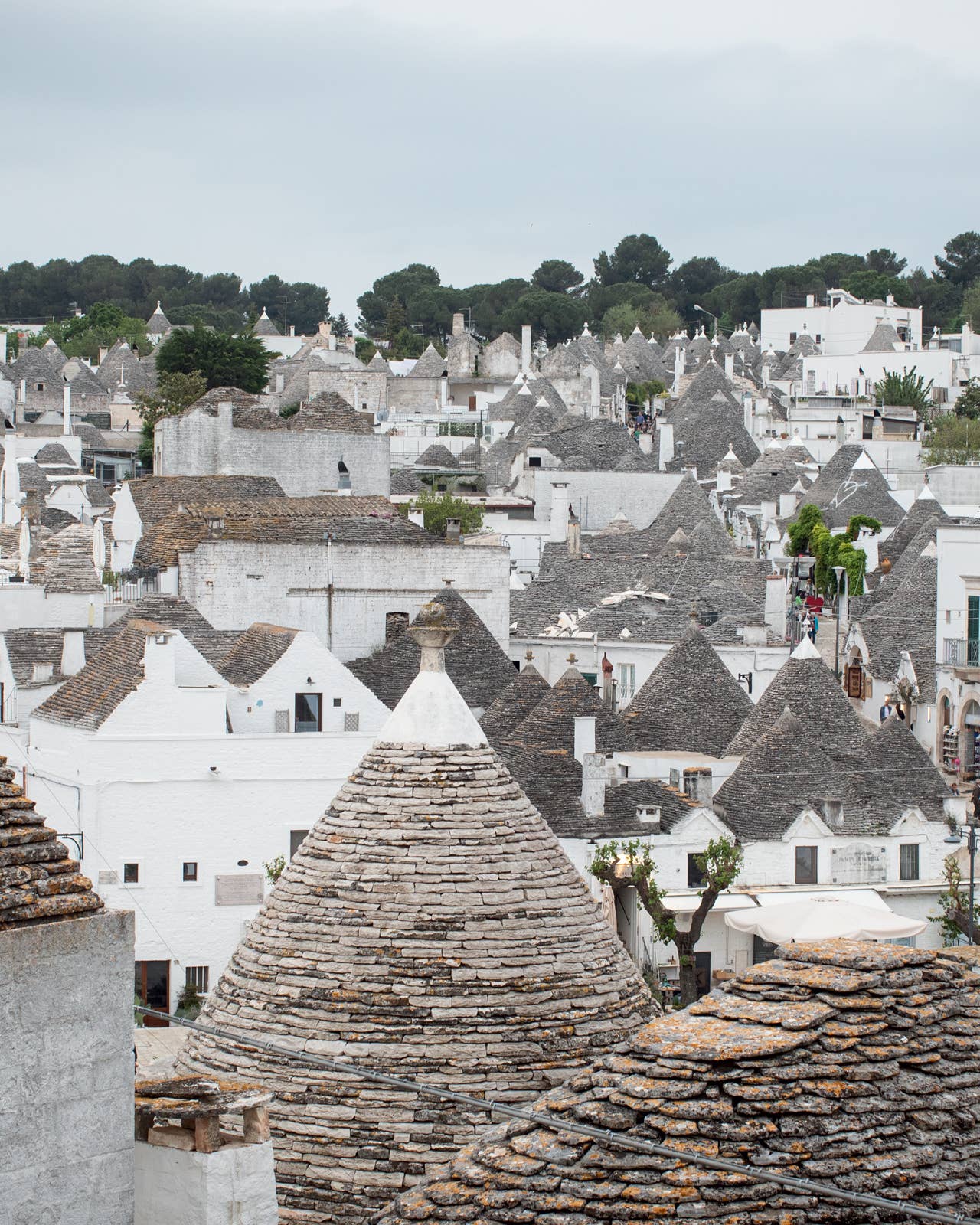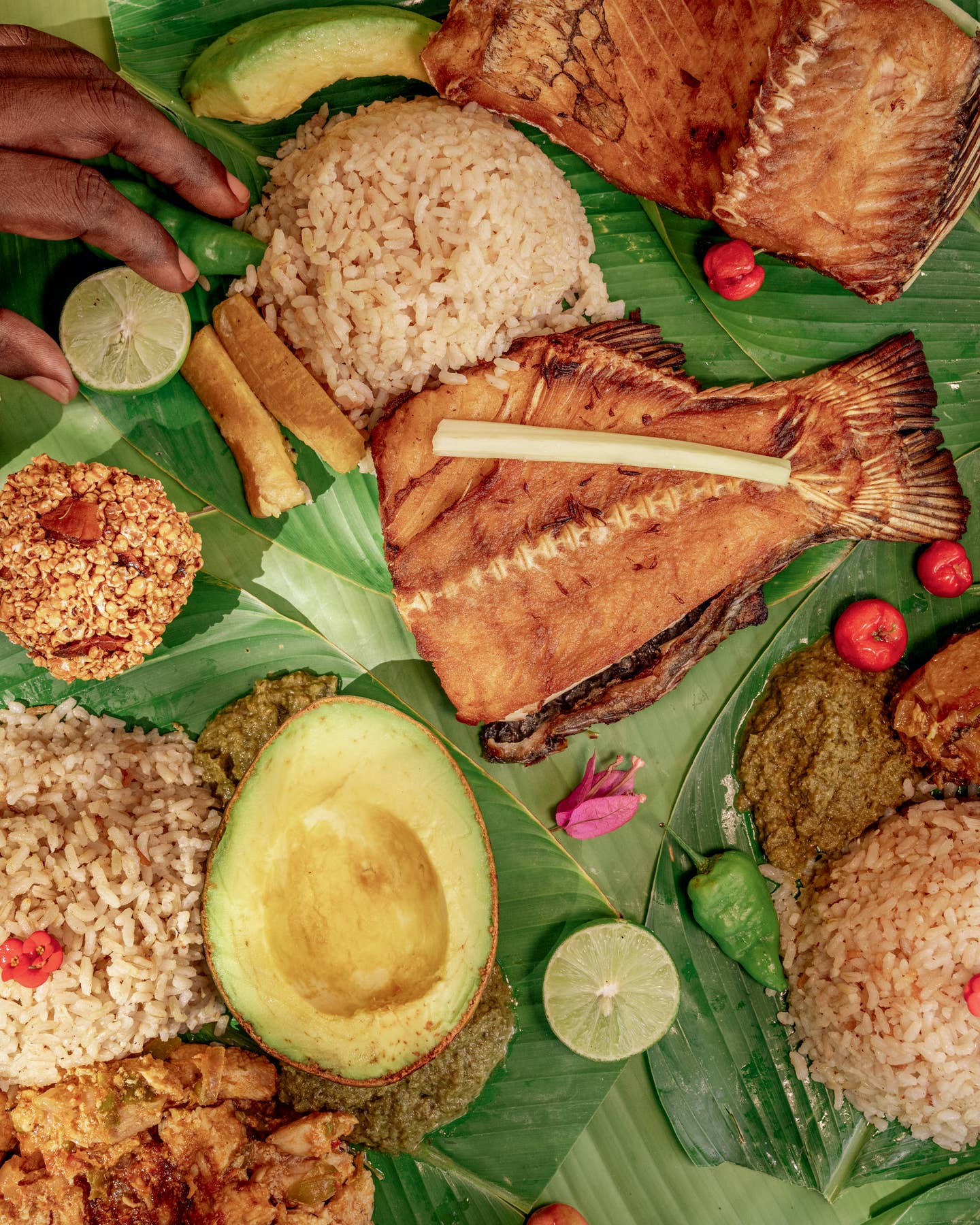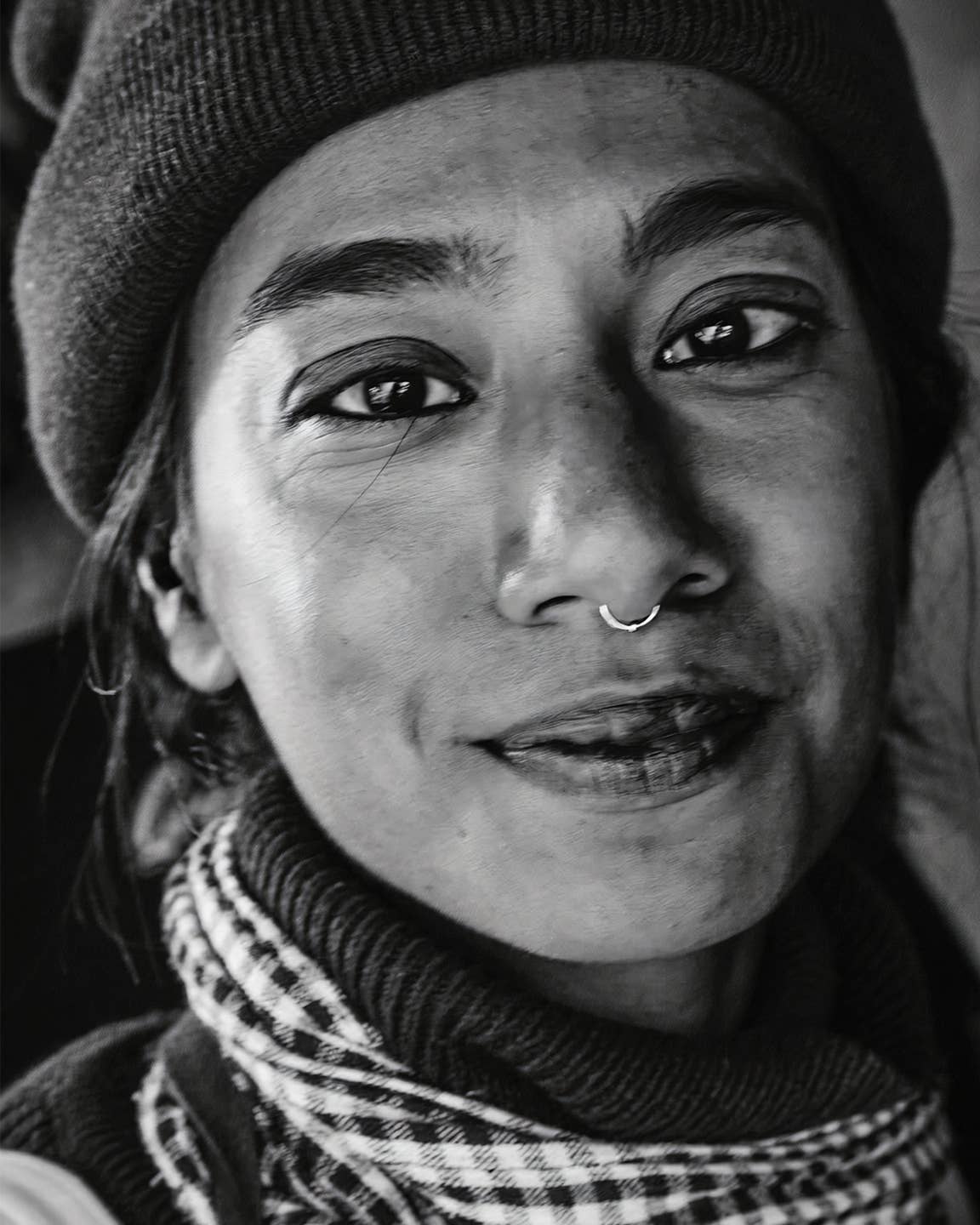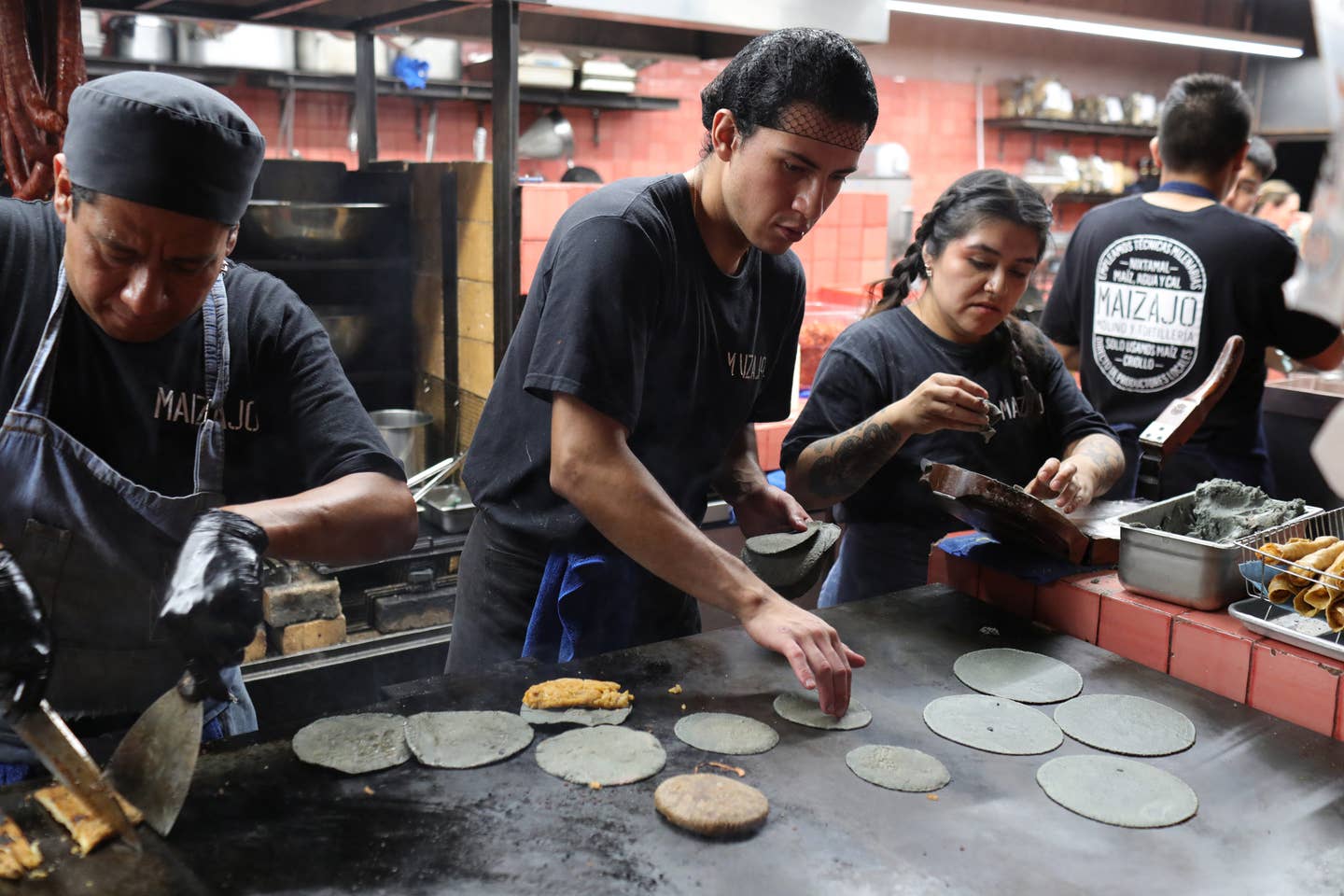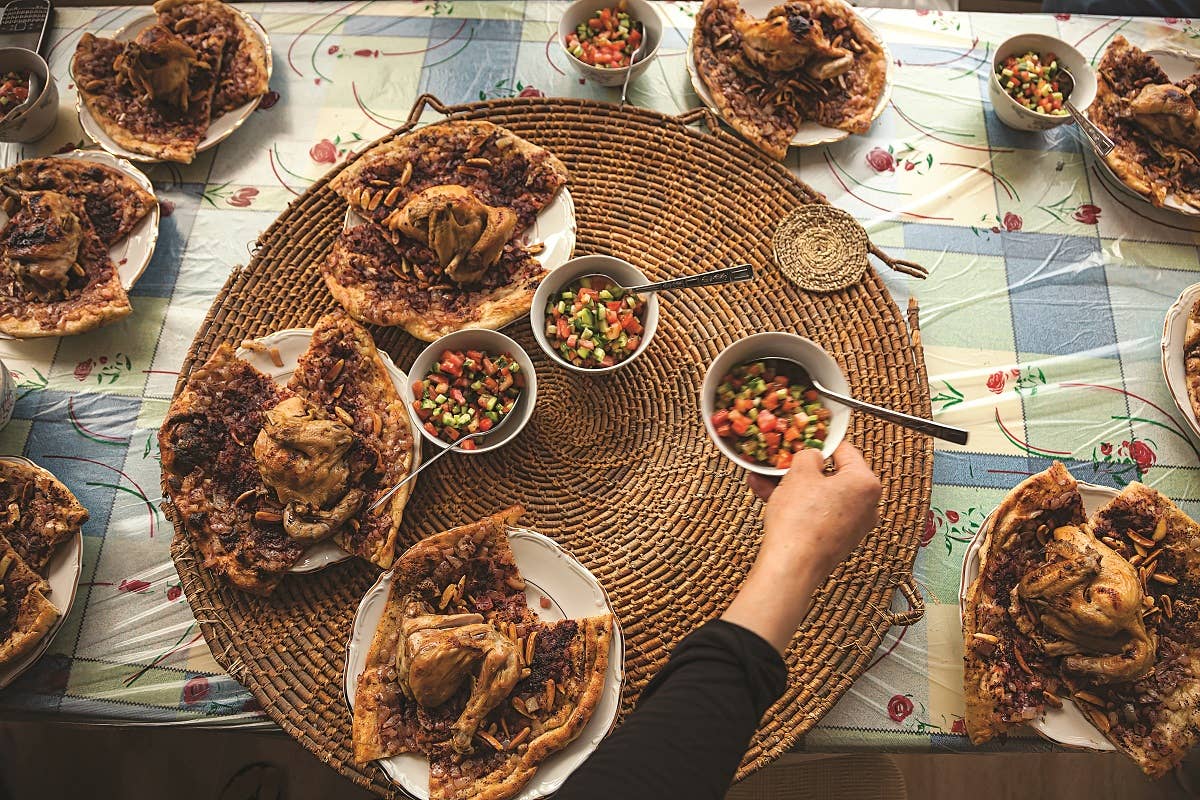
Heart of Palestine
In the West Bank, a good harvest and a shared meal are at the center of an enduring culture
Nisreen Ghanem's kitchen in the village of Burqin in Palestine's northern West Bank is as up-to-date as most any home kitchen I've seen in a small town. The floor is vinyl tile, the counters are Formica, the five-burner stove runs on gas. Nonetheless, when it's time to prepare m'sakhan, Ghanem, a youthfully agile, middle-aged mother of four, spreads a plastic sheet over her floor so that she and her sister-in-law, Mai, can get right down to business, as countless Palestinian women over the centuries have always done, kneeling almost prayerfully over the task. M'sakhan—juicy, bonein chicken glistening with olive oil, tinted maroon by tart sumac and piled high on just-baked flatbread smothered in caramelized onions—is quintessential Palestinian feast food, present at all manner of celebrations. Ghanem and a small army of other women will soon make thousands of portions for a community party to mark the end of the olive harvest. Since I'll be back home in Tuscany by then, she has offered to show me how to make the dish.
That's generous of her; m'sakhan takes the better part of a day to prepare. Stooping together, Nisreen and Mai chop a heroic amount of onions and almonds, mix the ingredients for a stock to enrich the small, tasty local chickens they are roasting, and spread sumac on a stack of dimpled flatbreads, all the while swatting away wandering toddlers, laughing. Gradually, over the course of the long morning, the aromas of onions and almonds frying, chicken roasting, and bread baking grow so intense that when the m'sakhan is finally ready in the middle of the afternoon, I feel as if I've already tasted it. Ghanem serves the dish along with a typical Palestinian salad of chopped tomato, cucumber, fresh mint and parsley, dressed with olive oil. The group of us—the sisters-in-law, their families, and me—gather at Ghanem's table and break off pieces of bread, folding them around morsels of tender chicken. At my first savory bite, I thank goodness I've come, at last, to Palestine.
The West Bank is the last stop on an odyssey in which I've circumnavigated the Mediterranean—a region whose cooking I've written about in half a dozen books. This time I'm researching a volume about olive oil. Though I've come to Burqin for the olive harvest, I've found so much more to capture my attention. Like the trees in the tightly managed groves climbing over steep, stony hillsides and carpeting drought-ravaged valleys, Palestinian culture itself continues against all odds. And the incredible food is key to its resilience.
Olives and their oil are sacred throughout the Mediterranean, but nowhere more so, it seems, than in the struggling lands of Palestine. There are 8 million olive trees here, their plump, shining fruits full of oil, and throughout the West Bank, in keeping with the annual tradition, men and women, boys and girls—from the smallest children to the most aged grandparents—all turn out to help with the picking. In the sunny, ancient groves around Burqin, harvesters pluck olives from branches one by one, tossing the purple-streaked green fruit into waiting bins. Along country lanes, young drivers haul hefty tractor loads of olives, offering proud smiles to passers-by. And in the mill run by Canaan Fair Trade, a group that supports the region's small farming cooperatives, children jostle to see the fruits arrive, shouting: “That's my dad's!” “And those are _my_dad's! I know because I helped him pick them.”
Working with 1,700 farming families, Canaan Fair Trade helps food producers in the West Bank sell their wares—olive oil and table olives from the local Nabali cultivar; za'atar, a Middle Eastern seasoning blend of wild thyme, sesame, sumac, and salt; maftoul, Palestine's hand-rolled couscous; and other regional foods—to consumers abroad. It's the brainchild of a soft-spoken Palestinian man named Nasser Abufarha. I meet Abufarha at the Jenin market, spread out over several streets in the town center, teeming with vendors plying fresh produce, spices and pickles, breads and sweets like ka'ak bil ma'amoul, date-filled cookies scented with orange blossom water. We haggle with a butcher over a very young lamb and buy bunches of herbs from an elderly woman.
Back in his kitchen, Abufarha prepares our dinner, rubbing the lamb with an abundance of olive oil, salt, and black pepper for roasting, and toasting almonds in olive oil to garnish a spiced rice dish aromatic with cinnamon, cloves, and allspice. As he cooks, he explains the difficulties West Bank olive farmers face. Water supply is a problem, but so is simple access to the trees.
“Often, the farmers have to go through Israeli settlements to get to their own land—sometimes the groves are even in the middle of settlements,” Abufarha says. I'd read the daily reports in the _Jerusalem Post_and other English-language Israeli papers about hostile settlers who burned or poisoned the trees. All too frequently, Israeli soldiers must be called out to protect Palestinian farmers during the harvest.
Still, farming cooperatives throughout the West Bank are reinvigorating farming traditions, producing ingredients like freekeh, roasted green grains of wheat, that have persisted here for millennia (see "Fruits of Palestine"). Historically, Palestine stretched from the Mediterranean Sea to the Jordan River, and was the western tip of the Fertile Crescent, the birthplace of agriculture.
Throughout its history, this valuable land has seen its fair share of conquests, from the Assyrians to the Romans to the Ottomans. Turkish rule ended when the Brits drove them out during World War I, but after the British Mandate was terminated in 1948, the land was carved up into Israel and Palestine, the boundaries of which remain in dispute.
Hemmed in on all sides by an opposing state, Palestinians' small piece of the world consists of two discontinuous areas: the Gaza Strip's 25 miles of coastline in the southwest (see "Seafood and Spice") and the Delaware-sized West Bank along the River Jordan in the northeast. In both areas, Palestinians continue to struggle to assert their rights to the land. Amid dangerous conflict, people find hope in the rituals of daily life, none more so than the growing and preparing of traditional foods.
At Abufarha's urging, I head to Dayr Balut, a town southwest of Jenin on the edge of the Palestinian territories, to meet Sara Mohammad Shatat Yousif and Siham Khaled Ahmad Mustafa, members of a women's cooperative that produces maftoul, the Palestinian couscous made of bulgur wheat—whole grains that are parboiled, dried in the sun, and then cracked—and hand-rolled in creamy yellow durum flour. Yousif demonstrates, sitting on the floor and stretching her legs out on either side of a large round tray holding dampened bulgur.
As she rolls the bulgur, Yousif gradually adds durum flour, her hands spread flat and moving in wide circles, caressing the grains. She sprinkles on water now and then to keep the bulgur wheat damp and absorbent. Slowly, the maftoul_starts to form, the bulgur comprising the heart of each pearl, and the durum flour, which adheres to the bulgur, lending the couscous plumpness. The finished pearls look like golden beads about an eighth of an inch in diameter. They will be set in the sun to dry for several days, then used in sumptuous Palestinian specialties like the same-named dish _maftoul—fat pearls of couscous perfumed with cumin, cardamom, and other spices, and then layered with chickpeas and succulent chicken that's been simmered with garlic and lemon.
Eager to taste, to learn even more, I make my way farther south to the final stop of my journey in Beit Sahour, a village on the ridgeline east of Bethlehem. I'm to stay a few days with Fairouz Shomaly, the best cook in town according to everyone I've asked. A dynamo in her early 60s, Shomaly teaches geography in the local high school during the week, but today she is bent on getting certain culinary lessons across to this Yankee. She ushers me into her kitchen as she zips about, chopping, slicing, stuffing, sautéing. Every now and then she takes a break to smoke a Marlboro with her two sisters, visiting from Australia and Texas, who sit and play cards on the deck outside.
Shomaly begins by showing me how to make sfiha, a Palestinian version of the garnished flatbread that's popular all over the Middle East. Taking a lump of risen dough, she rolls it between her palms into a small, compact ball—no gaps or cracks anywhere—and then, with a short rolling pin, quickly shapes it into a perfect little circle. The dough contains a three-to-one ratio of the all-purpose white flour she calls 'American" and the local durum wheat flour, along with plenty of olive oil—the secret to a crisp crust. Kneeling over a plastic basin, she kneads and punches a huge mound of it, determined to make enough _sfiha_on her day off to supply herself, her son, her two married daughters, the visiting sisters, and me with plenty to last the week.
Shomaly started the topping for the sfiha_the day before, first puréeing tomatoes, peppers, onions, and garlic, then adding ground beef, tahini, tomato paste, and salt, and leaving the mixture overnight so that its flavors could meld. As we prepare to assemble our _sfiha, she pricks the disks of dough to keep them from puffing in the heat, and instructs me to spread the thick paste over the dough. Shomaly shows me how to scrape through the beef topping with the tines of a fork to form ridges that will caramelize during baking, then pops the tray in her oven.
The timer can't ring fast enough for me. When it does, Shomaly jumps up, pulls out the first batch, and slides in the next. We lunch on the hot sfiha, the crust crunchy and topping satisfyingly rich. As soon as we finish eating, Shomaly says that it's time to make dinner.
We talk and laugh as we cook, working up an appetite for the centerpiece of the evening meal: maqloubeh, a layered dish of rice, meat, and vegetables. As ancient Mesopotamian cookbooks show, the dish goes back as early as 13th-century Baghdad; it's spread since then throughout the Middle East and taken on many variations. All have one characteristic in common: Once the rice is tender, the deep oiled pot in which the _maqloubeh_is cooked is inverted onto a platter so that the topmost layer of rice becomes the base of the dish—hence its name, which means "upside down."
For her version, Shomaly lays sliced tomatoes in the bottom of the pot, spooning on a mixture of stewed lamb, baked eggplant, and cauliflower, followed by spice-laden rice. Fragrant with cinnamon, cardamom, and curry powder, it's a beautiful, luxurious dish. And gathered around the table to eat it, Shomaly's extended family and I toast each other with the word sahteen. Roughly translated, it means "double health to you," but it's also a wish for the health of the community, which, in the end is what a feast, any feast, is really about: a celebration of hard work, good food, and the continuing hope for a brighter future.
Keep Reading
Continue to Next Story




